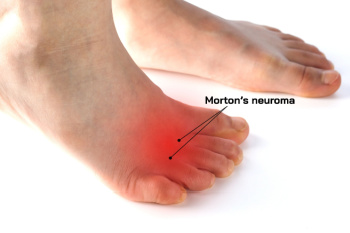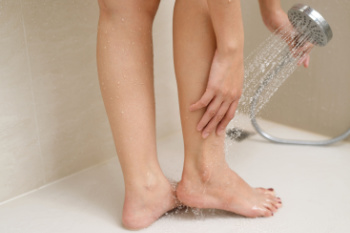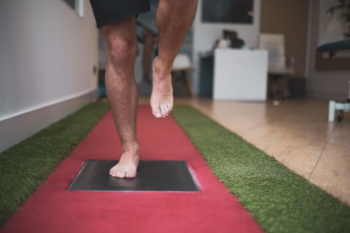
Connellsville


Morton's neuroma, a painful condition characterized by the thickening of tissue around the nerves leading to the toes, can significantly impair mobility and quality of life for those affected. While conservative treatments such as orthotic devices, shoe modifications, and corticosteroid injections can provide relief for some individuals, surgery may be necessary in cases where symptoms persist or worsen over time. Surgical intervention for Morton's neuroma typically involves removing the affected nerve tissue to alleviate pain and discomfort. The procedure aims to release the pressure on the nerves and restore normal function to the foot. Surgeons may opt for various techniques, including nerve decompression or neurectomy, depending on the severity and location of the neuroma. While surgery offers the potential for long-term relief from Morton's neuroma symptoms, it also entails risks and considerations that patients should discuss thoroughly with their podiatrists. If you have developed Morton’s neuroma, it is suggested that you consult your podiatrist who can discuss if surgery is a treatment option for you.
Morton’s neuroma is a very uncomfortable condition to live with. If you think you have Morton’s neuroma, contact Dr. Arnold Tarpley, Jr. of Tarpley Foot and Ankle Center. Dr. Tarpley will attend to all of your foot care needs and answer any of your related questions.
Morton’s Neuroma
Morton's neuroma is a painful foot condition that commonly affects the areas between the second and third or third and fourth toe, although other areas of the foot are also susceptible. Morton’s neuroma is caused by an inflamed nerve in the foot that is being squeezed and aggravated by surrounding bones.
What Increases the Chances of Having Morton’s Neuroma?
Morton’s neuroma is a very treatable condition. Orthotics and shoe inserts can often be used to alleviate the pain on the forefront of the feet. In more severe cases, corticosteroids can also be prescribed. In order to figure out the best treatment for your neuroma, it’s recommended to seek the care of a podiatrist who can diagnose your condition and provide different treatment options.
If you have any questions, please feel free to contact one of our offices located in Uniontown, and Connellsville, PA . We offer the newest diagnostic and treatment technologies for all your foot care needs.

Shoe size plays a pivotal role in both shoe comfort and foot health. Wearing ill-fitting shoes can lead to a multitude of foot problems, ranging from blisters and calluses to more severe issues, like bunions and hammertoes. When shoes are too tight, they can constrict blood flow and cause discomfort, while overly loose shoes may lead to friction and instability, increasing the risk of injury. Properly fitting shoes should have enough room for the toes to wiggle comfortably without being too loose in the heel or arch. As feet can change in size over time, due to factors such as weight gain, pregnancy, and aging, it is essential to regularly measure shoe size to ensure optimal fit and support. Investing in shoes that accommodate the unique shape and size of your feet can help prevent foot pain and deformities, promoting overall foot health and well-being. By prioritizing shoe size in shoe selection, individuals can enjoy greater comfort, mobility, and longevity in their footwear choices. If you have questions about correct shoe size and how it relates to foot health, it is suggested that you visit a podiatrist.
Finding a properly-fitting shoe is important in reducing injuries and preventing foot problems. For more information about treatment, contact Dr. Arnold Tarpley, Jr. from Tarpley Foot and Ankle Center. Dr. Tarpley will treat your foot and ankle needs.
Proper Shoe Fitting
A common concern when it comes to foot health, having properly fitted shoes can help prevent injuries to the foot. Out feet affect our posture and gait, which in turn affects the biomechanics and overall bodily structure. With 33 joints, 26 bones, and over 100 ligaments, the potential for serious injury is much greater than one realizes. Although the feet cease growth in adulthood, they still change shape as they mature. Here are some factors to consider when it comes to investing in proper fitting shoes:
Keeping in mind how shoes fit the biomechanics of your body, properly-fitting shoes are vitally important. Fortunately, it is not difficult to acquire footwear that fits correctly. Be sure to wear shoes that support the overall structure of your body. Do your feet a favor and invest in several pairs of well-fitted shoes today.
If you have any questions please feel free to contact one of our offices located in Uniontown, and Connellsville, PA . We offer the newest diagnostic and treatment technologies for all your foot and ankle needs.

Healthy feet are vital for overall well-being, supporting us through countless steps each day. Incorporating simple everyday foot care tips into your usual routine can help keep your feet happy and pain-free. Start by washing your feet daily with warm water and mild soap, paying attention to the spaces between your toes. Moisturize your feet regularly to prevent dryness and cracking, focusing on the heels and soles. Trim your toenails straight across to avoid ingrown nails, and file them gently to smooth any rough edges. Choose comfortable and supportive footwear that fits well and provides adequate cushioning and arch support. It is helpful to rotate your shoes to allow them to air out and reduce moisture buildup. Practice good foot hygiene in communal areas like gyms and swimming pools by wearing flip-flops or shower shoes. Finally, incorporate stretching and strengthening exercises into your routine to maintain flexibility and strength in your feet and ankles. If you are seeking additional everyday foot care tips, it is suggested that you consult a podiatrist who can provide you with the knowledge you are seeking.
Everyday foot care is very important to prevent infection and other foot ailments. If you need your feet checked, contact Dr. Arnold Tarpley, Jr. from Tarpley Foot and Ankle Center. Dr. Tarpley can provide the care you need to keep you pain-free and on your feet.
Everyday Foot Care
Often, people take care of their bodies, face and hair more so than they do for their feet. But the feet are a very important aspect of our bodies, and one that we should pay more attention to. Without our feet, we would not be able to perform most daily tasks.
It is best to check your feet regularly to make sure there are no new bruises or cuts that you may not have noticed before. For dry feet, moisturizer can easily be a remedy and can be applied as often as necessary to the affected areas. Wearing shoes that fit well can also help you maintain good foot health, as well as making it easier to walk and do daily activities without the stress or pain of ill-fitting shoes, high heels, or even flip flops. Wearing clean socks with closed shoes is important to ensure that sweat and bacteria do not accumulate within the shoe. Clean socks help to prevent Athlete’s foot, fungi problems, bad odors, and can absorb sweat.
If you have any questions please feel free to contact one of our offices located in Uniontown, and Connellsville, PA . We offer the newest diagnostic and treatment technologies for all your foot and ankle needs.

The foot is a complex structure of bones, muscles, ligaments, tendons, and joints, all working in harmony to facilitate movement and support the body's weight. Bones, including the tarsal, metatarsal, and phalanges, form the framework of the foot, providing stability and flexibility. Joints, such as the ankle and subtalar joints, allow for smooth articulation and motion, enabling walking, running, and jumping. Tendons, tough bands of tissue, connect muscles to bones, transmitting force and facilitating movement. Additionally, ligaments, which connect bones to each other, provide stability and prevent excessive movement, reducing the risk of injury. Muscles, comprising intrinsic and extrinsic groups, power foot movements and control foot position. Together, these components create a complex network that enables the foot to adapt to various surfaces and activities. This networks ensures balance, agility, and efficient locomotion. If you have sustained any kind of foot injury or are experiencing foot pain, it is suggested that you consult a podiatrist who can provide you an accurate diagnosis and treatment options.
If you have any concerns about your feet, contact Dr. Arnold Tarpley, Jr. from Tarpley Foot and Ankle Center. Dr. Tarpley can provide the care you need to keep you pain-free and on your feet.
Biomechanics in Podiatry
Podiatric biomechanics is a particular sector of specialty podiatry with licensed practitioners who are trained to diagnose and treat conditions affecting the foot, ankle and lower leg. Biomechanics deals with the forces that act against the body, causing an interference with the biological structures. It focuses on the movement of the ankle, the foot and the forces that interact with them.
A History of Biomechanics
Modern technological improvements are based on past theories and therapeutic processes that provide a better understanding of podiatric concepts for biomechanics. Computers can provide accurate information about the forces and patterns of the feet and lower legs.
Understanding biomechanics of the feet can help improve and eliminate pain, stopping further stress to the foot.
If you have any questions please feel free to contact one of our offices located in Uniontown, and Connellsville, PA . We offer the newest diagnostic and treatment technologies for all your foot and ankle needs.